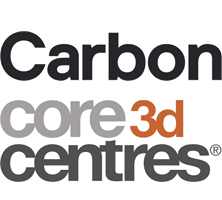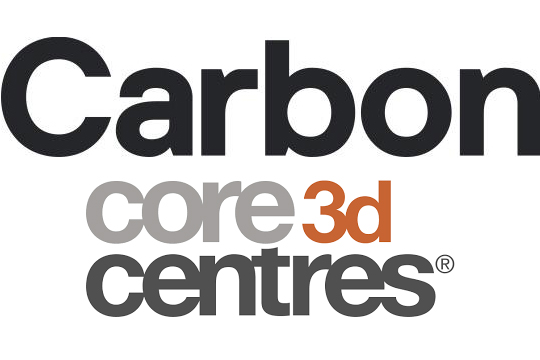Carbon and Core3dcentres® Announce Global Enterprise Partnership
Building on its existing partnership, the companies will offer affordable additive manufacturing solutions to dental labs around the world.
REDWOOD CITY, Calif. & MAARTENSDIJK, Netherlands–(BUSINESS WIRE)–Carbon (www.carbon3d.com), a Silicon Valley-based digital manufacturing company, and Core3dcentres® (Core3d), a global company committed to leading the dental industry into the digital era by providing dental production and design solutions, today announced the international expansion of their existing and trusted partnership. By expanding their collaboration into countries spanning four continents, dental labs across the world will now have access to Carbon’s groundbreaking 3D printing systems based on its proprietary Digital Light Synthesis™ technology and unparalleled range of materials.
This comes at a time of massive growth for 3D printing in the dental market – which, according to a 2018 report from SmarTech Publishing, grew by over 35 percent for the second year in a row, and will continue to grow at a dramatic pace in the coming years. To capitalize on the growing market opportunity, Core3d and Carbon have agreed to expand their enterprise partnership to countries around the globe, enabling the delivery of Core3d and Carbon printed products to Australia, Benelux Union (Belgium, the Netherlands, and Luxembourg), Canada, Croatia, Germany, Japan, Malaysia, New Zealand, Poland, Singapore, Spain, the U.K. and the U.S.A. Timing for expansion into new countries will be dependent on regulatory requirements and approval.
“The dental industry’s use of additive manufacturing has skyrocketed over the last couple of years, but it wasn’t always like that. For some time, dental labs were plagued by 3D-printed parts that were inconsistent and poorly made with a limited range of materials, but that’s all changed with Carbon,” said Mark Maier, Managing Director of Global at Core3d. “We’ve seen tremendous success deploying Carbon’s technology in the U.S. – high throughput, accuracy of prints using durable, high-quality materials, constant uptime, first-class education and customer support. We want to implement the same success in our dental labs around the world.”
With the ability to produce end-use parts quickly, accurately, and consistently using Carbon’s additive manufacturing technology, Core3d has made products such as surgical guides and dentures more affordable across the board. This democratizes 3D printing technology for all types and sizes of dental labs, which look to Core3d to help them manufacture parts they can’t or don’t have the resources to produce in-house. For Core3d, Carbon has also improved turnaround time and the diversity of its offerings.
“Core3d is at the forefront of innovation in digital dentistry, and Carbon is thrilled to expand our partnership in support of our shared global vision and commitment to the continuing development and enhancement of the digital ecosystem,” said Brian Ganey, General Manager of Carbon’s Dental Business. “The age of digital 3D Manufacturing is here, and Carbon is redefining what’s possible with a complete dental solution that delivers on the promise of digital fabrication for production at scale.”
Carbon offers a revolutionary alternative to 3D printing, using light and oxygen to rapidly produce high-quality, end-use products from a pool of resin. Its robust and reliable family of 3D printers based on proprietary Digital Light Synthesis technology, coupled with its broad portfolio of materials, deliver a complete solution for all dental production needs. Carbon’s solution significantly improves efficiency and accuracy, reduces time from design to manufacture, and provides important features such as part traceability and serialization through next-gen software design tools. With Carbon, everything is digitally traceable, down to a unique ID that can automatically be engraved or embossed on any part. This capability is particularly valuable for highly regulated industries like dental, where the FDA will increasingly require part-specific data to ensure product performance and patient safety.
Further, Carbon’s unique subscription-based service closely aligns the company to its customers’ business success. By providing regular over-the-air software updates, continuous education and training programs, and one-to-one customer service and support, Carbon ensures every customer’s business is always up and running.
For more information, visit www.carbon3d.com and www.core3dcentres.com.
About Core3dcentres
Represented on the four continents, Core3dcentres is a global company that is committed to leading the dental industry in the digital era.
We believe in excellence in dentistry and patient care. By personalising digital technology, we provide a complete work-flow and production solution, making the benefits available to everyone, resulting in a partnership for success.
Core3dcentres operates as an open platform, providing solutions that guarantee a digital workflow for anyone in the dental market place. There are no limitations for our partners or on the type of solution they choose to employ.
Furthermore, we are a company with a fast-growing presence in the international marketplace, reflected in our rapidly expanding customer base and workforce, a worldwide professional network, and a constant exchange of knowledge through our leading-edge training and educational programmes. All these aspects make Core3dcentres the global leader – consistently embracing, adapting and applying the benefits of the technological shift to digital dentistry.
Our locations: Australia, Benelux Union (Belgium, the Netherlands, and Luxembourg), Canada, Croatia, Germany, Japan, Malaysia, New Zealand, Poland, Singapore, Spain, the U.K., and the U.S.A.
About Carbon
Carbon’s mission is to reinvent how polymer products are designed, engineered, manufactured, and delivered, toward a digital and sustainable future. Based in Silicon Valley, Carbon brings together innovations in hardware, software, and molecular science to deliver industry-leading digital manufacturing solutions. With Carbon’s ground-breaking Digital Light Synthesis™ technology and broad family of programmable liquid resins, manufacturers can unlock new business opportunities such as mass customization, on-demand inventory, and previously impossible product designs. Carbon’s solutions allow customers to build uniquely differentiated products while reducing waste and speeding time to market. To learn more, visit www.carbon3d.com.
Connect with Core3D:
Twitter: https://twitter.com/Core3DCentresNA
LinkedIn: https://www.linkedin.com/company/core3dcentres
Facebook: https://www.facebook.com/Core3DCentresNA/
Instagram: https://www.instagram.com/core3dcentresnorthamerica/
Connect with Carbon:
Twitter: https://twitter.com/Carbon
LinkedIn: https://www.linkedin.com/company/Carbon
Facebook: https://www.facebook.com/PrintCarbon
Instagram: https://www.instagram.com/Carbon
Contacts
Core3dcentres
Greg Harris
greg@core3dcentres-na.com
or
Carbon
Sarah Tolle
stolle@carbon3d.com


